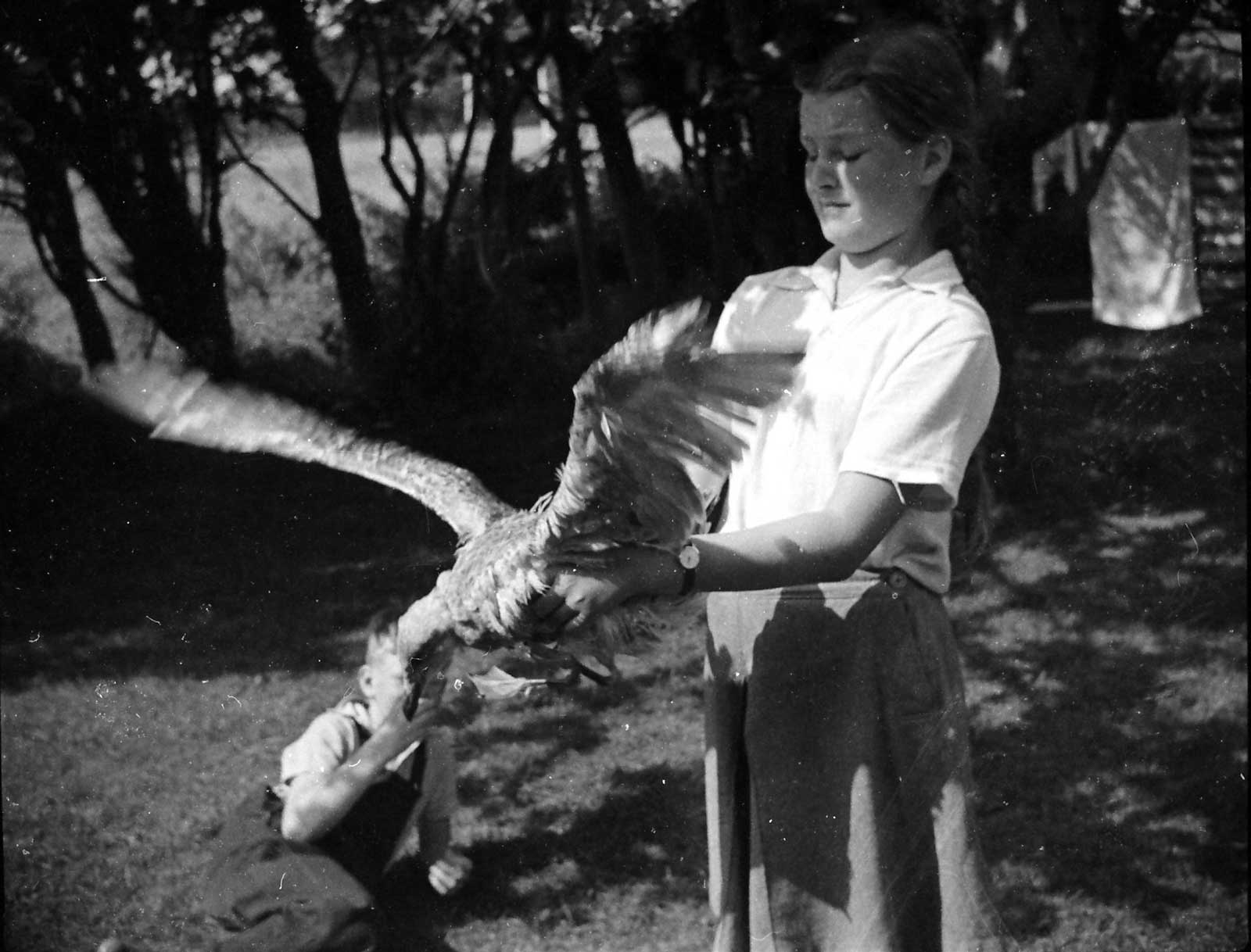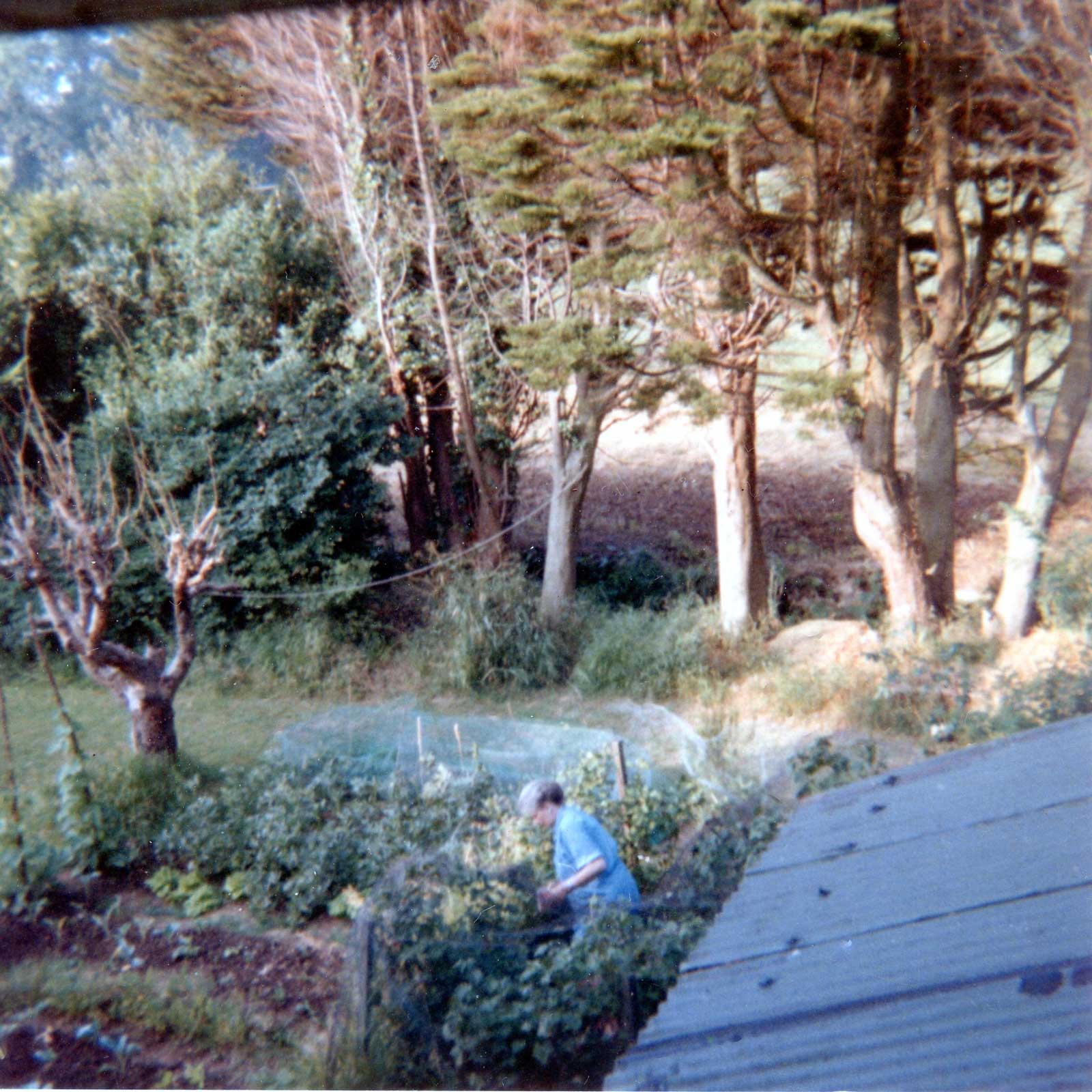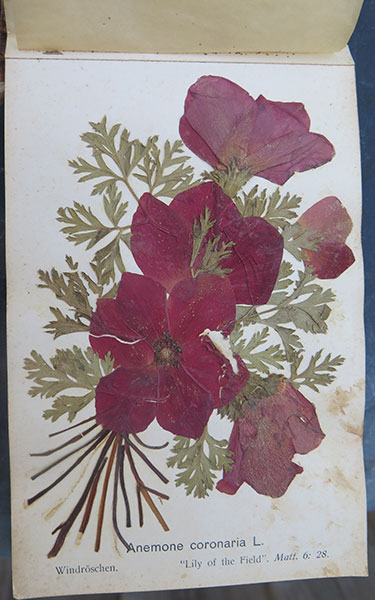16. Tanglin Cottage – The Garden
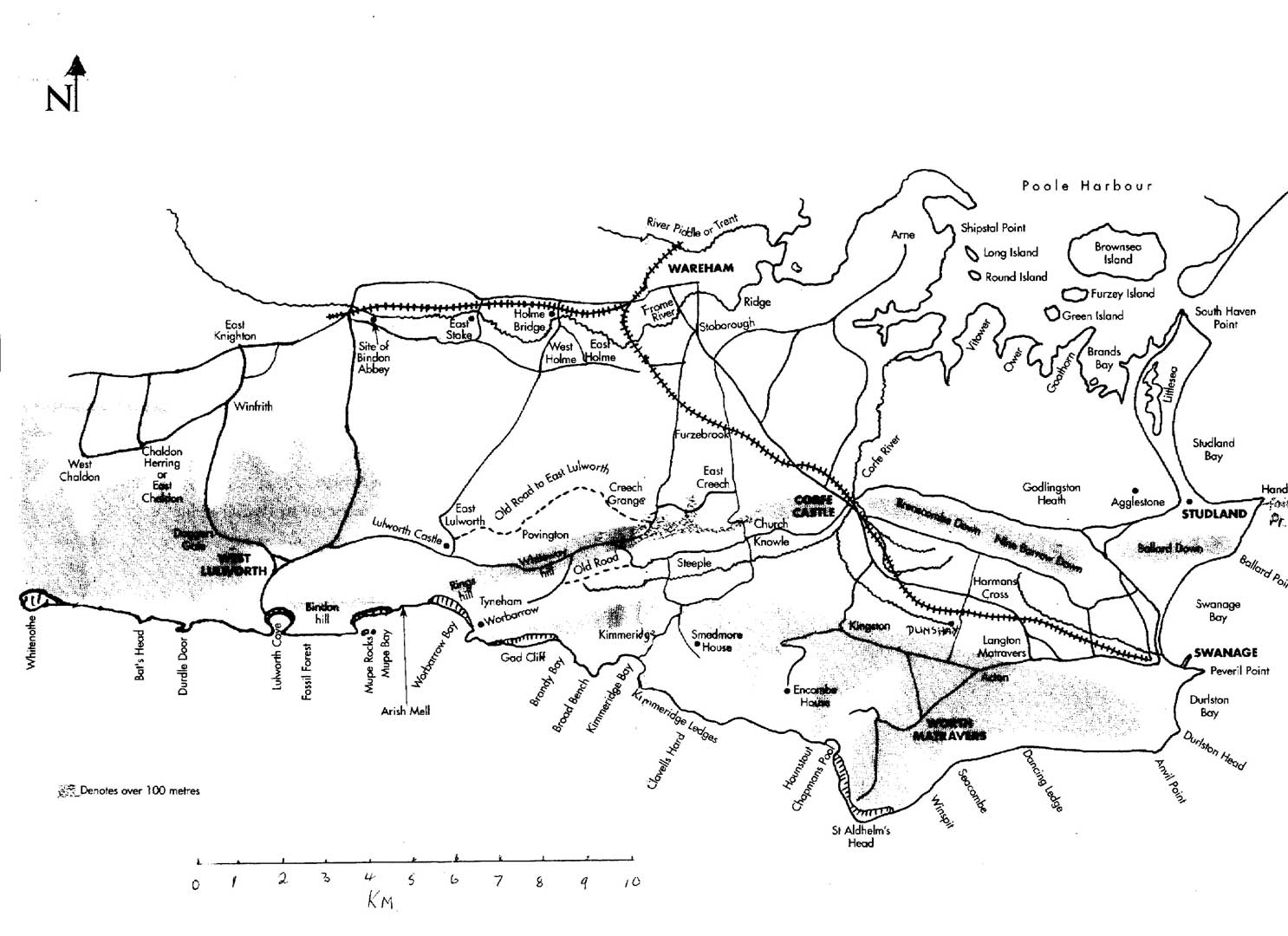
15. Tanglin Cottage
August 6, 2020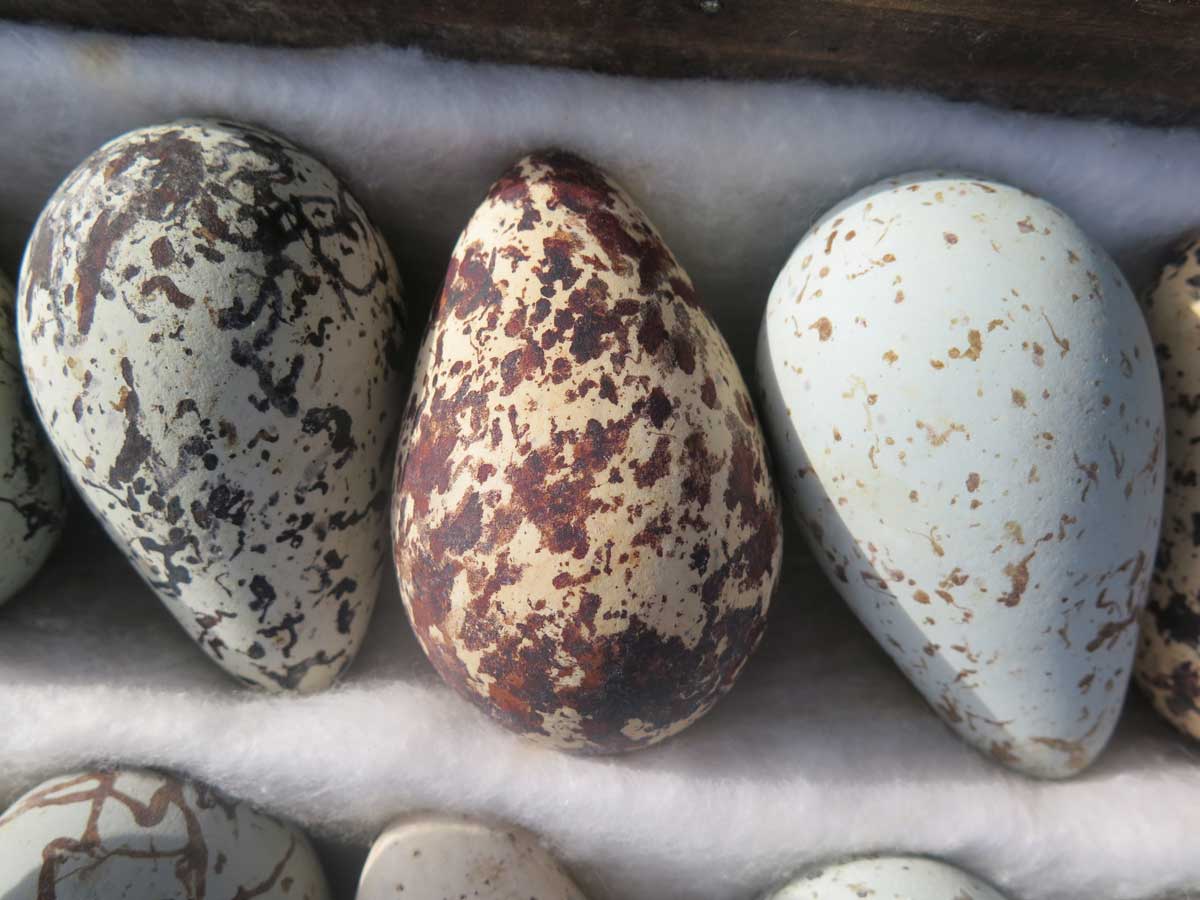
17. Birds And Beasts
August 20, 2020T anglin Cottage was set in a small garden, which became our playground. The north facing front garden, the formal section facing onto the road, was fairly dismal. Part was taken up by the garage's crazy-paving apron; the rest was not featureless, however. A pair of small elm trees stood in its northeast corner, a crimson peony and a large scarlet poppy annually decorated the central, narrow bed; Japanese anenomes and a fucshia bush flowered beside the front door. A small laburnum tree dangled its yellow blooms over the apology for lawn in the western part. All these, surviving despite us kids, flowered in summer. Our feet, by-passing the crazy-paving paths, wore away the grass of the little lawns. As long as we were around it was hopeless to tart up the beds.
We kids added one striking feature to the central flowerbed and that by accident. At some point one of us had stored horse chestnuts in the springs of one of the front bedrooms, keeping them to harden and become more formidable for conkers. That was mostly a boys' game; you each put a string through a pierced chestnut – the conker - then one let his conker hang whilst the other tried to strike it, taking turns until one conker was destroyed. The survivor was victor. Forgotten, that stash of conkers reappeared when our passion for the game had passed. We threw some of them out of the window where several germinated. One grew into a smart, shapely tree, later cut down because it obstructed the weak light into the drawing room window.
The front garden was separated from the road by a low brick wall. My first bicycle, roughly painted pale blue, was old, gearless and secondhand. There were few thefts, no one locked a bike and we were careless of our possessions. One evening I left it outside by the road. Next morning it was gone. Several days later, walking down to the sea front, I found it leaning against the only other brick garden wall in the road. Someone must have borrowed it to get home and returned it...to the wrong brick wall.
Paved paths led down steps at either side of the house into the larger back garden, which centred on an apple tree yielding nice, crisp individual fruit. We learned to cycle round and round this tree before venturing onto the road. Near it was a smaller apple tree, a pathetic shadow, its few fruit little and sickly. For me it earned fame one autumn day in the mid fifties. Having somehow escaped school, I looked out of the window to see a flow white fragments falling from it - a bird with an upset stomach? Investigating, I found a rose-ringed parrakeet pecking away at those tiny apples. Common in India, it was many years before those birds established themselves in Purbeck.
A third fruit tree, a balance to that sad apple, was what my mother called a bird cherry. Surely no one would have planted a tree so weak in fruit. Probably poor soil and heavy shade had caused the cherries to be small, yellow and sour. Perhaps all three trees had flourished under a previous regime with a gardener; the abuse they suffered from us rendered two of them worthless. When my father returned from Malaya, amongst plans to restore the garden to some semblance of beauty, he dramatically pruned the good apple tree. Seeing him at work with a saw, as a stroppy rebellious teenager, I rebuked him for being so drastic, then disappeared before he could turn the saw on me. It never fruited again.
When we were older, Anthony decided to make part of the back garden productive, digging it up and planting cabbages. The drainage system in that road was bad and any downpour always caused the sewer to overflow, flooding the back garden with sewage. My mother's unfavourite task was clearing up the mess. Each flood receded, leaving those poor, half-grown cabbages draped with used lavatory paper. Perhaps that was why we never ate them.
A row of Leylandia bushes, planted for a thick garden hedge and neglected under our regime, had grown into trees in which we climbed and birds nested. Beneath them flowed a stream, for us, the unrivalled glory of that garden. Whether it was our territory or not, we constantly played there, damming it to form a little reservoir in which we sailed toy boats. We would play 'dam busters', using explosive fireworks (more powerful in those days) to blast the barrage. I introduced small fish (none was ever seen again) and used the stream to exercise recovering oiled seabirds. The bird that stayed longest was a young gull brought to me from Durdle Door by an RSPCA officer. 'Durdle' had the freedom of the garden for eighteen months before he flew away. A couple of weeks later seeing a flock of gulls swimming off the beach I gave my habitual feeding call. He detached himself, swam ashore and stayed in the garden a further week before flying off again. At least I knew he could survive in the wild.
The stream separated us from 'Journey's End' playing field, one end of which was edged by tall elm trees, housing a rookery. In spring, we climbed into the swaying upper branches to take one egg from each nest attracted by their variety in size, shape and colour. Later, strong winds would dislodge nearly-fledged young ones, which I sometimes brought home. One, 'Jimmy', lived for months in the big apple tree, retreating to the shed when it rained, free to go foraging with the wild rooks when they flew over each morning but always expecting supper when he returned at dusk.
Libby and I both had rabbits and someone owned a tortoise. Anthony's pied cat, 'Goalie', was followed by Libby's grey one, Shandy Cyclops (it had both eyes). I also had a wild hare, Oster, saved from a cat as a tiny leveret and released when full grown. After we left home our parents managed to bring some order to the garden, growing flowers, vegetables and fruit but it was a short regime: soon they sold up and moved away.

